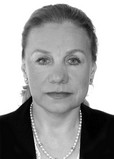Industry resource allocation and number of people involved in sports and physical training activities
Фотографии:
ˑ:
Dr.Hab., Associate Professor E.V. Kuzmicheva
Russian State University of Physical Education, Sport, Youth and Tourism (SCOLIPE), Moscow
Objective of the study was to identify correlation between the number of people involved in sports and physical training activities in different regions of the Russian Federation and the corresponding resource allocation in the region, as well as the main factors that limit the growth in the number of those involved.
Methods and structure of the study. For the study purposes, we used the statistical materials "Sports and Fitness Development Indicators" for the period from 2016 through 2017 placed on the website of the Ministry of Sports [4]. Actual statistics on the key resource indicators are presented below.
Results of the study and conclusions. Increase funding, an increase in the number of sports facilities and industry personnel do not always (and not fully) entail the desired increase in the number of people involved. The research objective was to search for the relationship (or lack thereof) between the industry resource allocation and the number of people involved in sports and physical raining activities, to identify the main factors that limit the increase in the number of people involved. The indicators of resource allocation per inhabitant differ significantly in a number of entities (up to 10 times in absolute value). For eight federal districts of the Russian Federation, we calculated the coefficients of correlation between the industry resource allocation and the number of people involved in sports and physical training activities.
We conducted a comparative analysis of these indicators based on the materials for the 2016 and 2017 releases. According to the 2017 data, in three federal districts, there was a statistically significant positive correlation between the one-time throughput capacity of sports facilities and the number of people involved (in 2016, in two districts); also in two districts - between financing per inhabitant and the number of people involved in sports and physical training activities (in 2016 - in one district). Unfortunately, over two years, no statistically significant correlation was found in any district between the number of residents per one employee in the field of physical culture and sport and the number of people involved. The physical culture and sport industry resource allocation is a prerequisite for increasing the number of people involved, but that does not go far enough and further research is required.
Keywords: industry resources, material security, number of people involved.
References
- Kuzmicheva E.V. Resursnoe obespechenie otrasli i chislennost vovlechennyih v zanyatiya fizicheskoy kulturoy i sportom [National physical education and sports sector: resource supply versus sporting population]. Teoriya i praktika fiz. kultury, 2018, no. 9, pp. 94-96.
- O sotsialnyih normah i normativah po fizicheskoy kulture i sportu RF: Rasporyazhenie Pravitelstva RF ot 3 iyulya 1996 g. v red. Rasporyazheniya Pravitelstva RF ot 13.07.2007 # 923-r. [Social norms and standards for physical education and sports of the Russian Federation: Order of the RF Government July 3, 1996 No. 1063-Р am. Order of the RF Government dated 13.07.2007 # 923-r]. www.minsport.ru
- Pokazateli razvitiya fizicheskoy kulturyi i sporta (2016 god, 2017 god) [Physical education and sports development indices (2016, 2017]. www.minsport.ru



 Журнал "THEORY AND PRACTICE
Журнал "THEORY AND PRACTICE